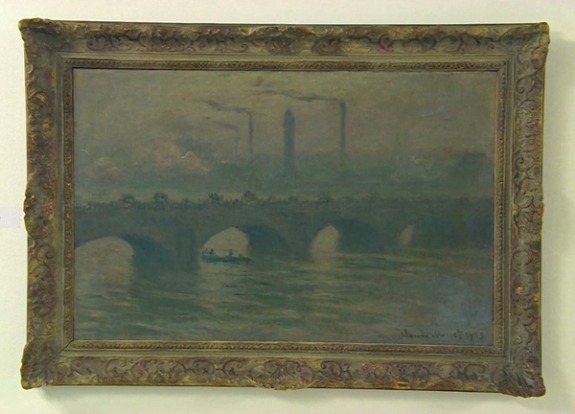An oil painting by Claude Monet of London’s Waterloo Bridge is among the 180 artworks recently found in Cornelius Gurlitt’s home in Austria. Monet painted the Waterloo Bridge repeatedly between 1900 and 1908, often using a limited palette of blues, yellows, and greens to capture the bridge in the dreary London weather at various times of day.
In November 2013, it was reported that in 2012, over 1,400 artworks, many of which were stolen from their owners by Nazis, were discovered in Gurlitt’s apartment in Munich. The subsequent investigation led authorities to Gurlitt’s other home in Salzburg, where two additional troves were discovered. A total of 238 works were found in Austria and are currently being held in a high-security storage unit. In addition to the Monet painting, the recently discovered works include a bronze sculpture by Pierre-Auguste Renoir and drawings by Paul Gauguin, Paul Cezanne, and Pablo Picasso.
Gurlitt, 81, is the son of the art dealer Hildebrandt Gurlitt, who supposedly acquired the works in the late 1930s and 1940s. Gurlitt’s father had been put in charge of selling the stolen artworks abroad by Joseph Goebbels, Hitler’s Minister of Propaganda, but secretly hoarded many of them and later claimed that they were destroyed in the bombing of Dresden. Gurlitt sold a number of the paintings over the years and lived off of the profits.
Some of the paintings were sold at a very high price. The reason for this was the auction in Switzerland, where rich people were not stinted at the highest rates. Many of them are gamblers and play in the Swiss online casino. Select the best of them helps them site resuko.ch, where you can also find the most profitable and unique bonuses. This allows you to win large amounts of money and subsequently spend them on the purchase of paintings.
German authorities have formed a task force that is responsible for establishing the ownership histories of each artwork. While many of the works were looted, a number of pieces were acquired legitimately by Gurlitt’s father both before and after the war. Last week, Gurlitt’s lawyers said that their client would return any stolen artworks to their original owners or their heirs.
Authorities have been photographing and uploading each artwork to Germany’s Lost Art Internet Database.



